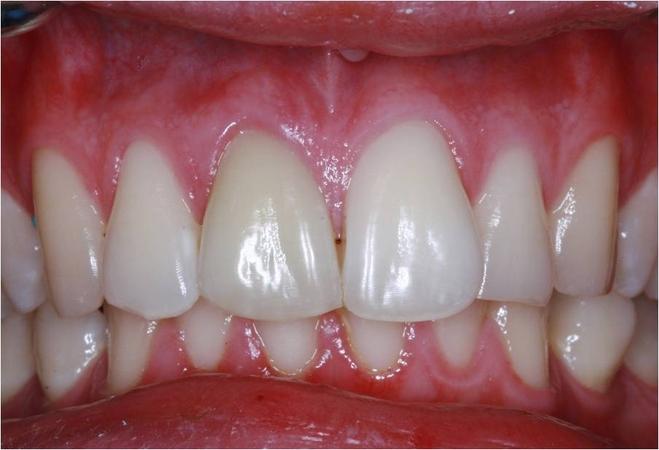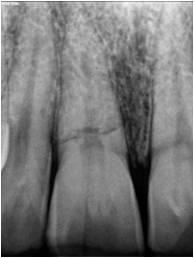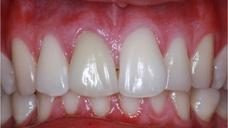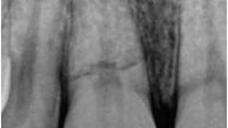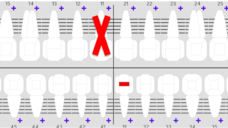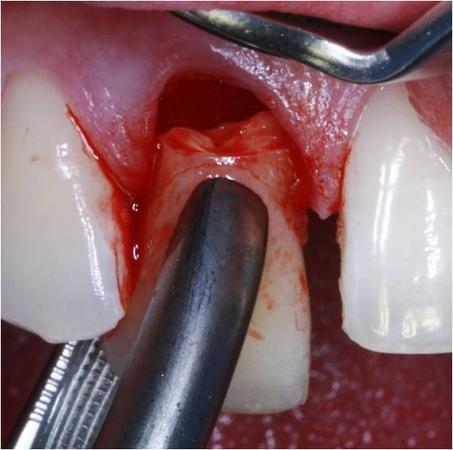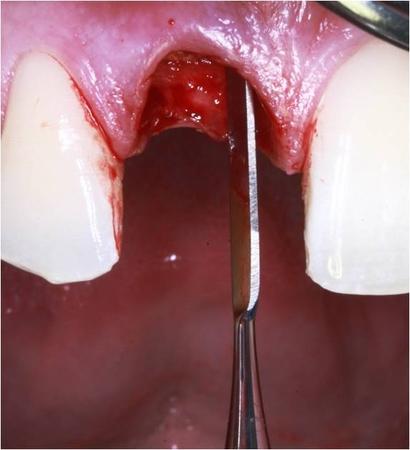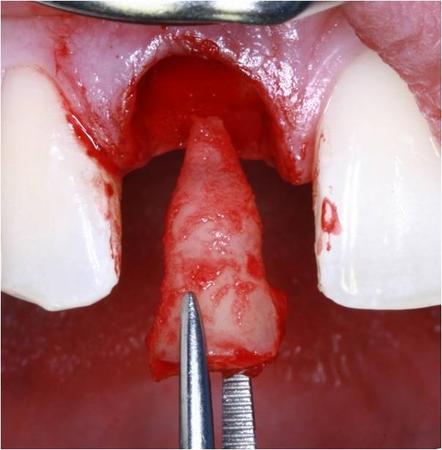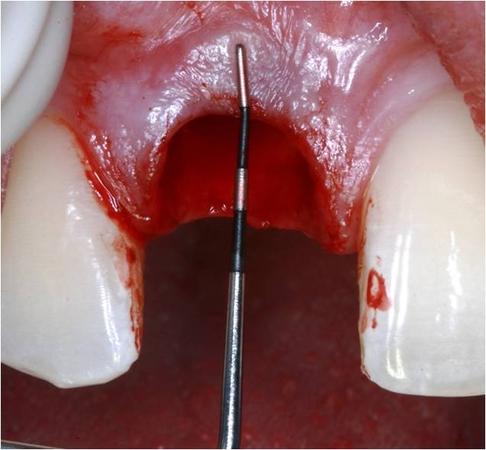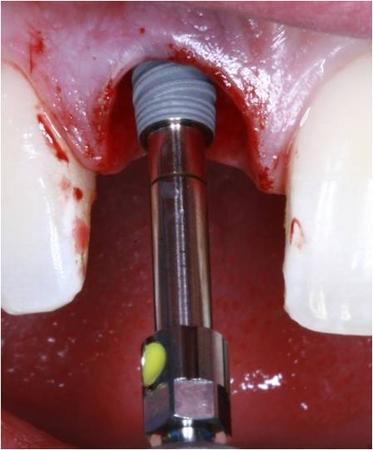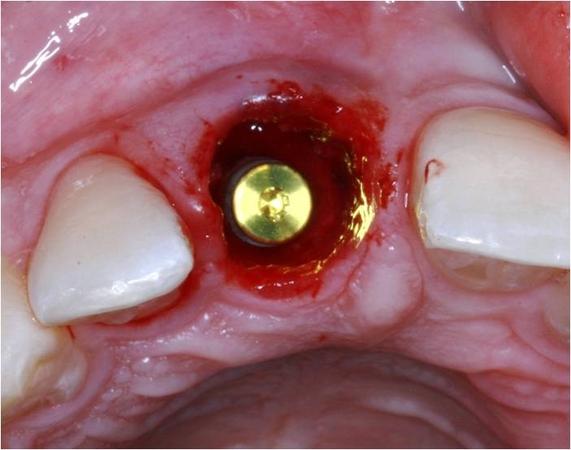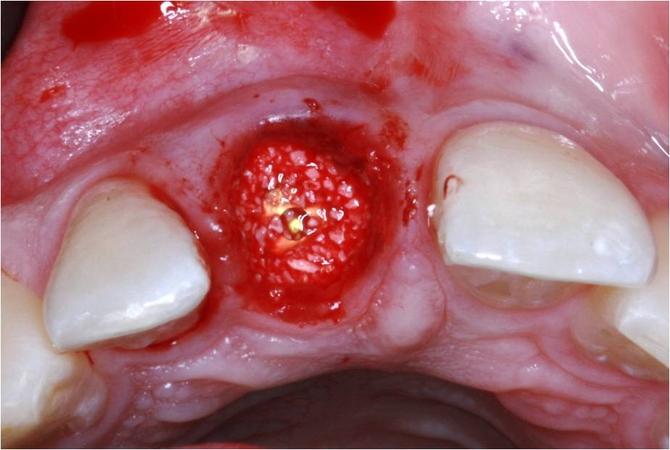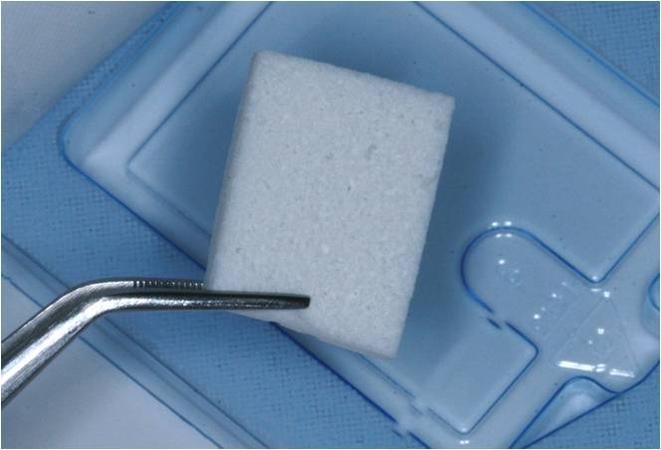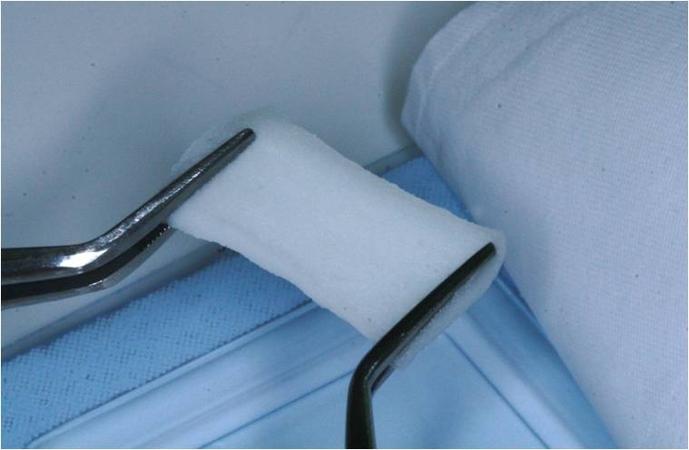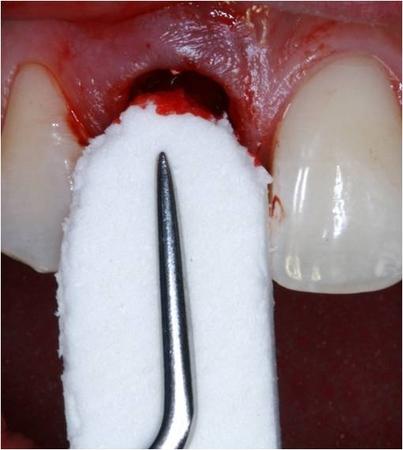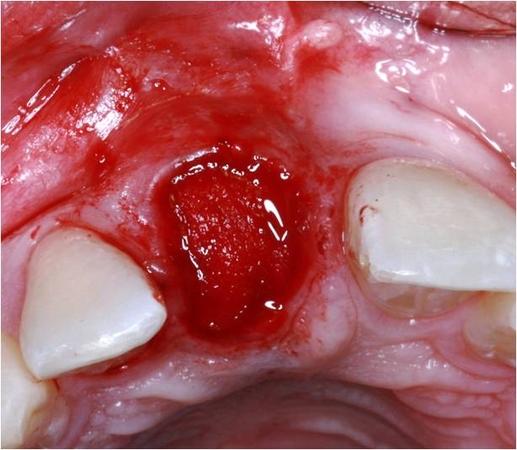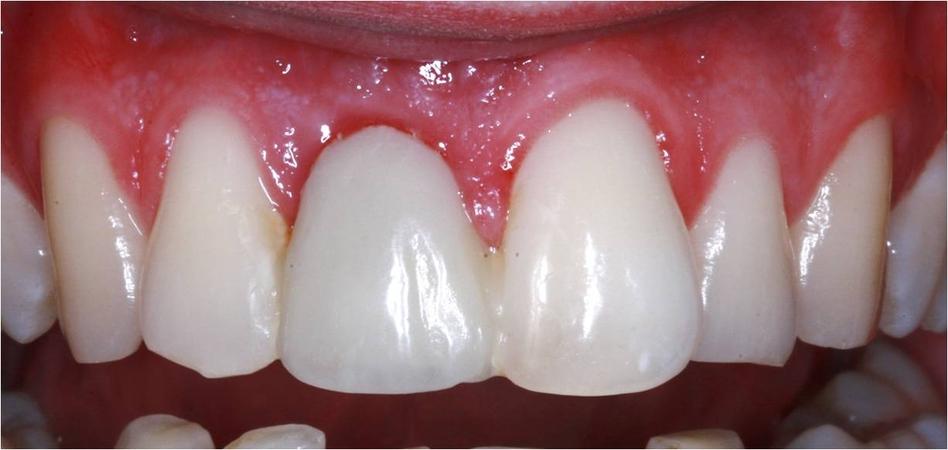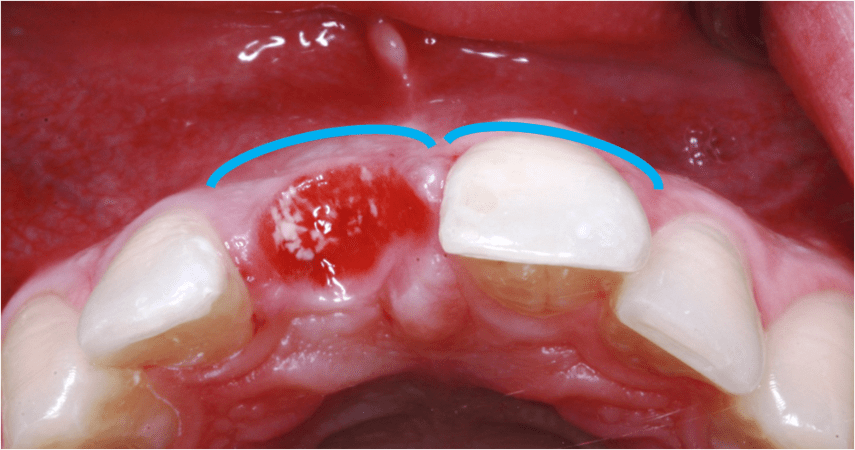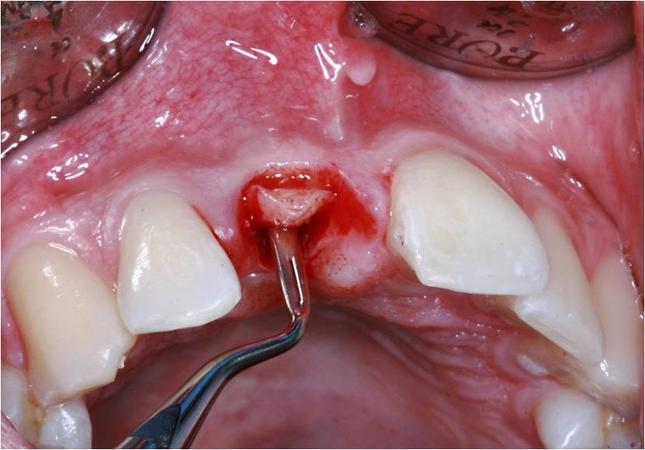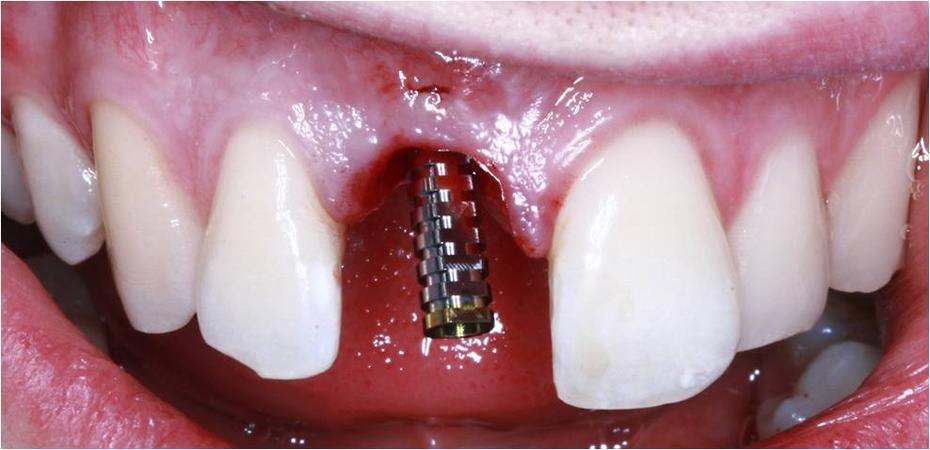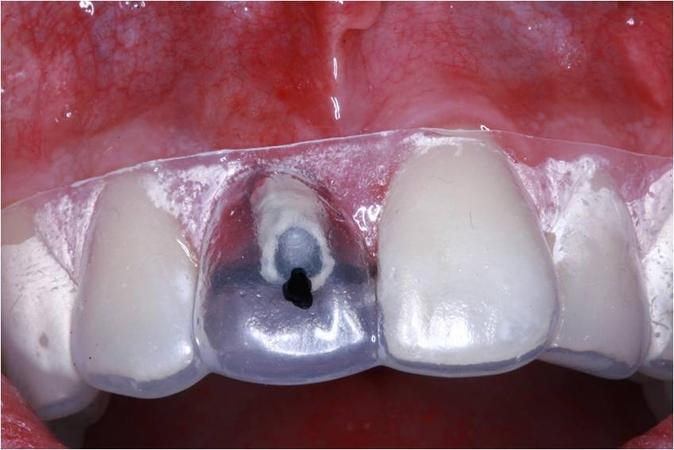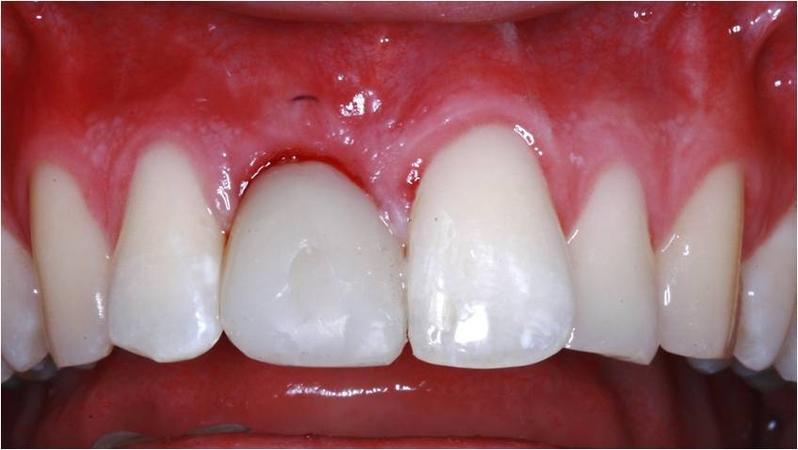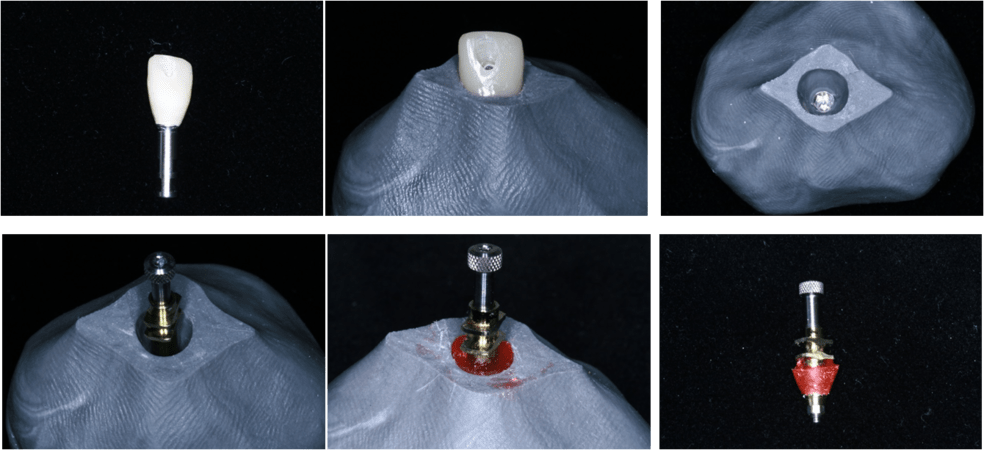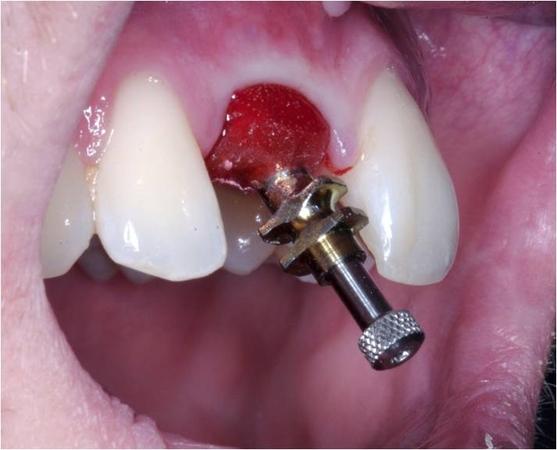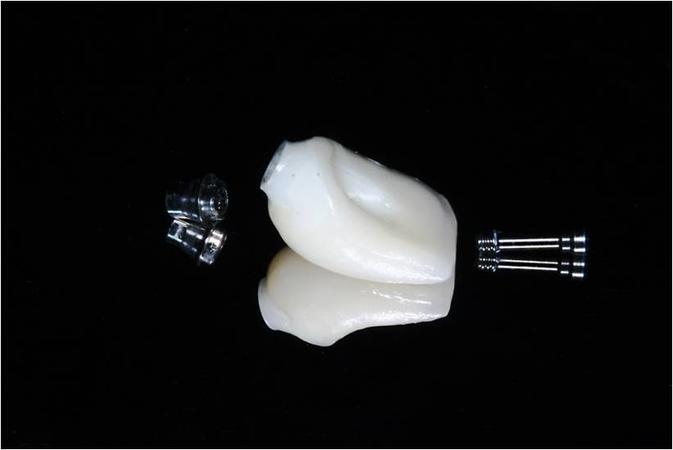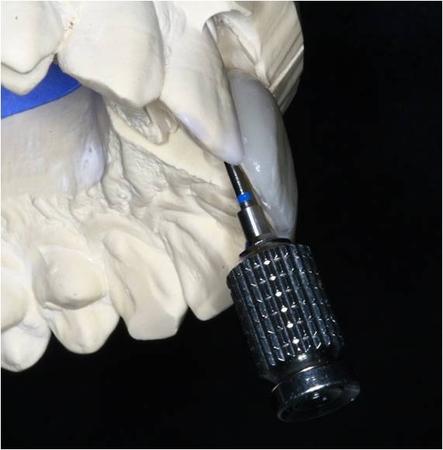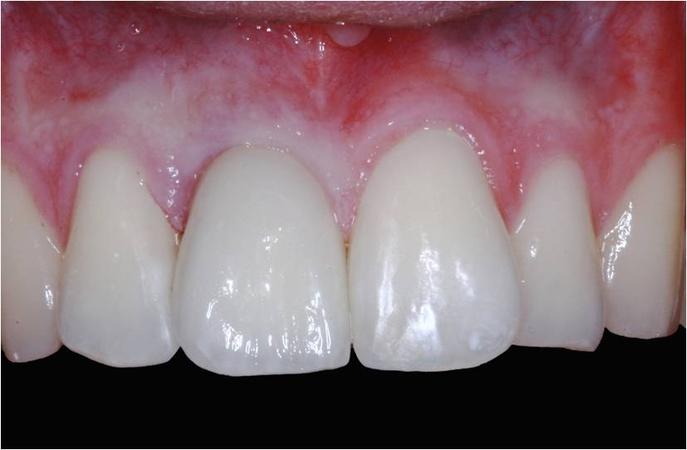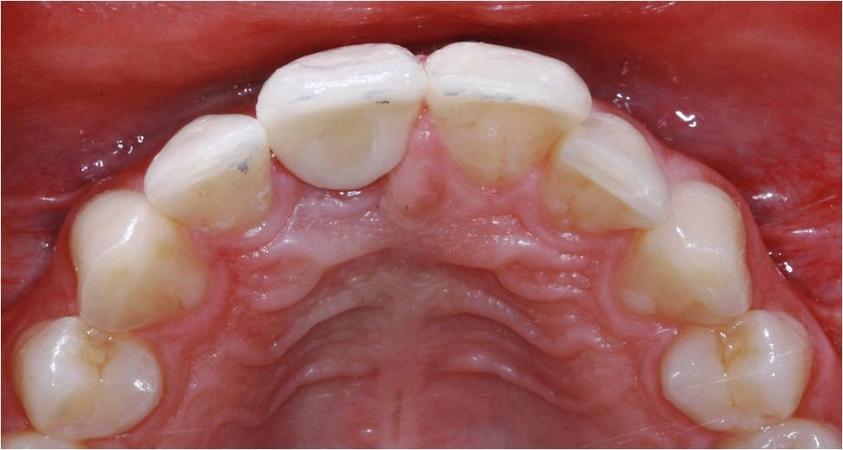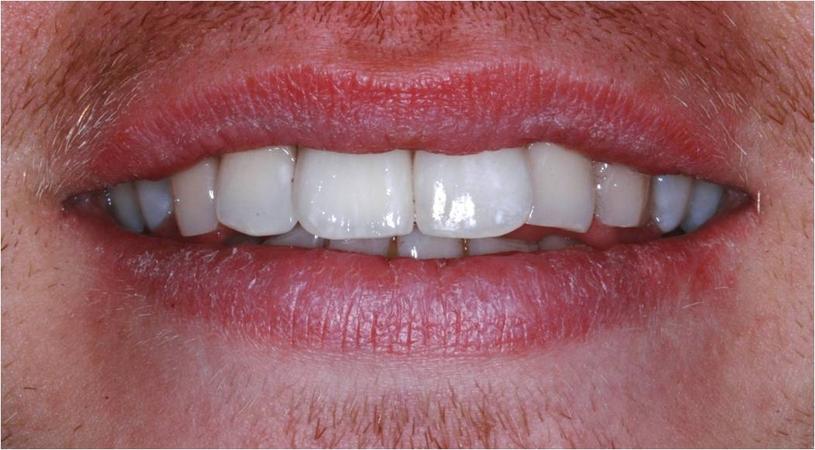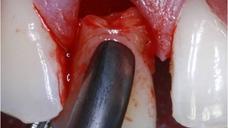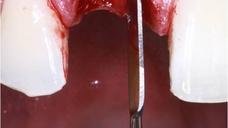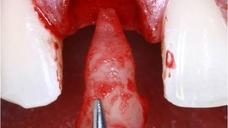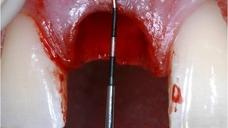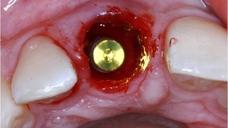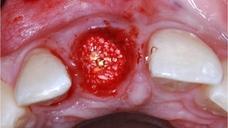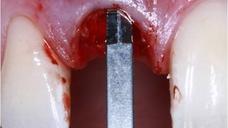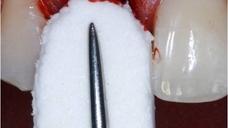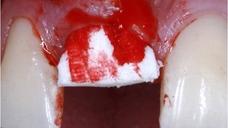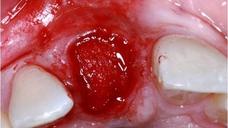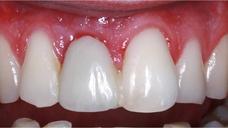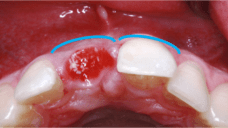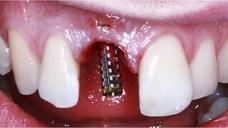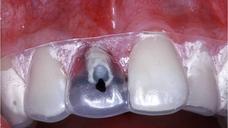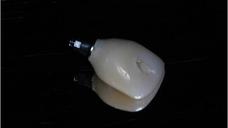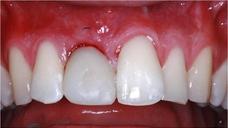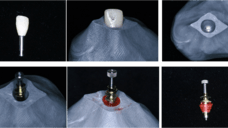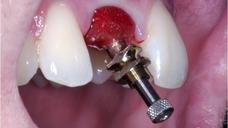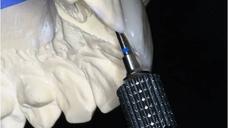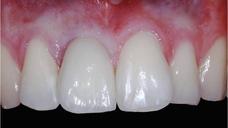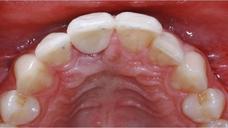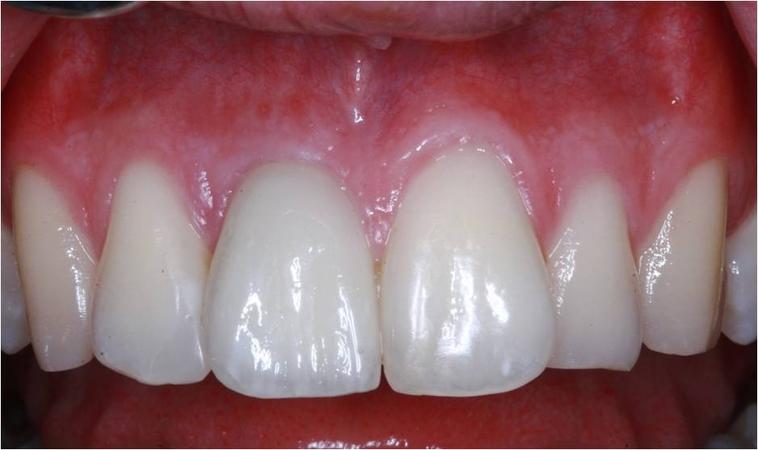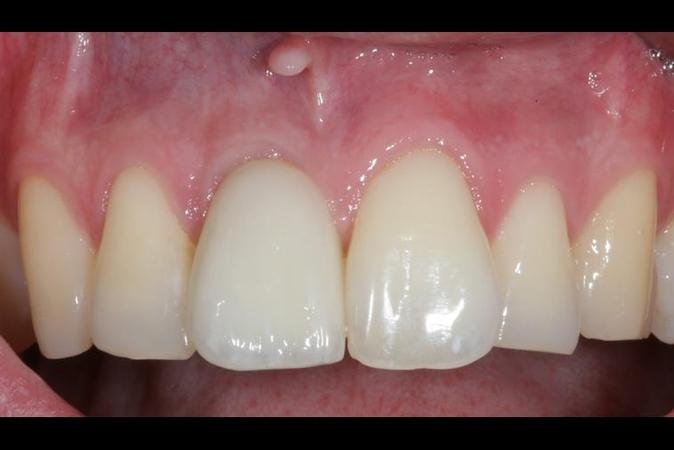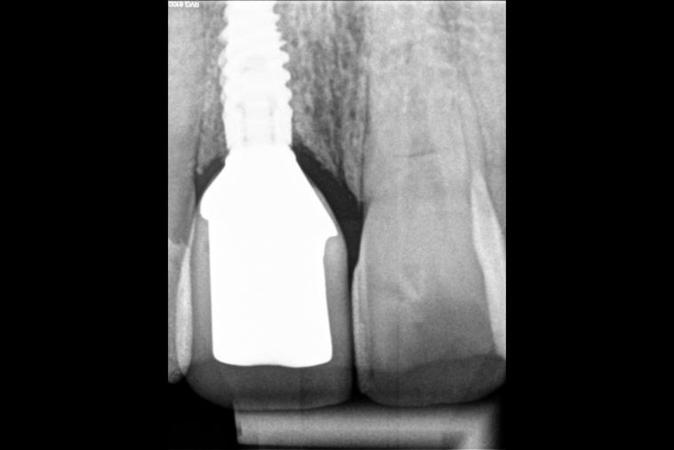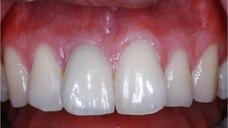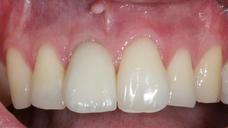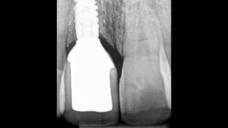Immediate implant placement with a screw-retained restoration using the angulated screw channel abutment
A 29-year-old male patient in good general condition presented himself after a traumatic injury with nonspecific pain in the maxillary front area. Teeth #13-23 (FDI) / 6-11 (US) showed a positive response to sensitivity testing. Tooth #11 (FDI) / 8 (US) showed only little discomforting response to percussion. The periapical radiograph reflected a deep horizontal fracture of tooth #11 (FDI) / 8 (US), approx. 3mm below the limbus alveolaris. After informing the patient that saving tooth #11 (FDI) / 8 (US) would be hopeless and after discussing the various treatment options, the patient opted for an implant-based prosthodontic restoration. After extraction of the coronal part of the tooth, the residual apical portion of the tooth was atraumatically removed using a periotome. The buccal bone plate appeared to be completely intact after probing, therefore immediate implant placement could be performed.
A NobelActive 4.3 mm x 13 mm implant was placed and the implant had to be angulated palatally due to the large diameter of the root. Given the high scalloped design and thin biotype of the mucosa and also the big discrepancy between the alveolus and the implant diameter, a submerged healing approach was chosen. Further soft tissue management procedures could be performed subsequently. The “gap” was filled with a slow resorbing anorganic bovine bone mineral (Bio-Oss®, Geistlich Pharma AG, Wolhusen, Switzerland). Simultaneous thickening of the buccal gingiva could be achieved by using the new collagen 3D-Matrix (Mucomaix®, Matricel GmbH, Herzogenrath, Germany) applied buccaly using the envelope technique. A temporary adhesive bridge was fabricated and inserted for the healing time. After three months of healing the re-entry procedure was performed doing a roll-flap in order to achieve further thickening of the buccal gingiva. A chairside-manufactured provisional crown was used for additional contouring of the gingival margin.
The gingival healing and contouring was performed over a period of three months. After this time the definitive impression was taken using a customized impression coping (based on the emergence profile of the provisional crown). Due to the palatal angulation of the implant, the definitive restoration was fabricated using a ceramic-veneered-to-zirconia Angulated Screw Channel (ASC) abutment.
